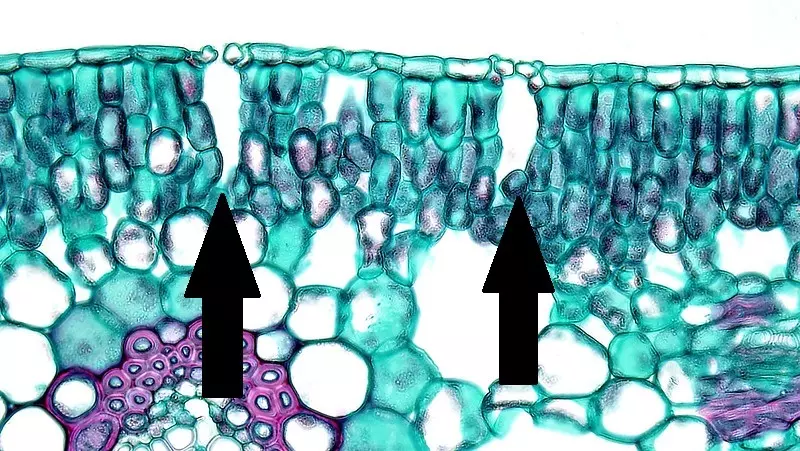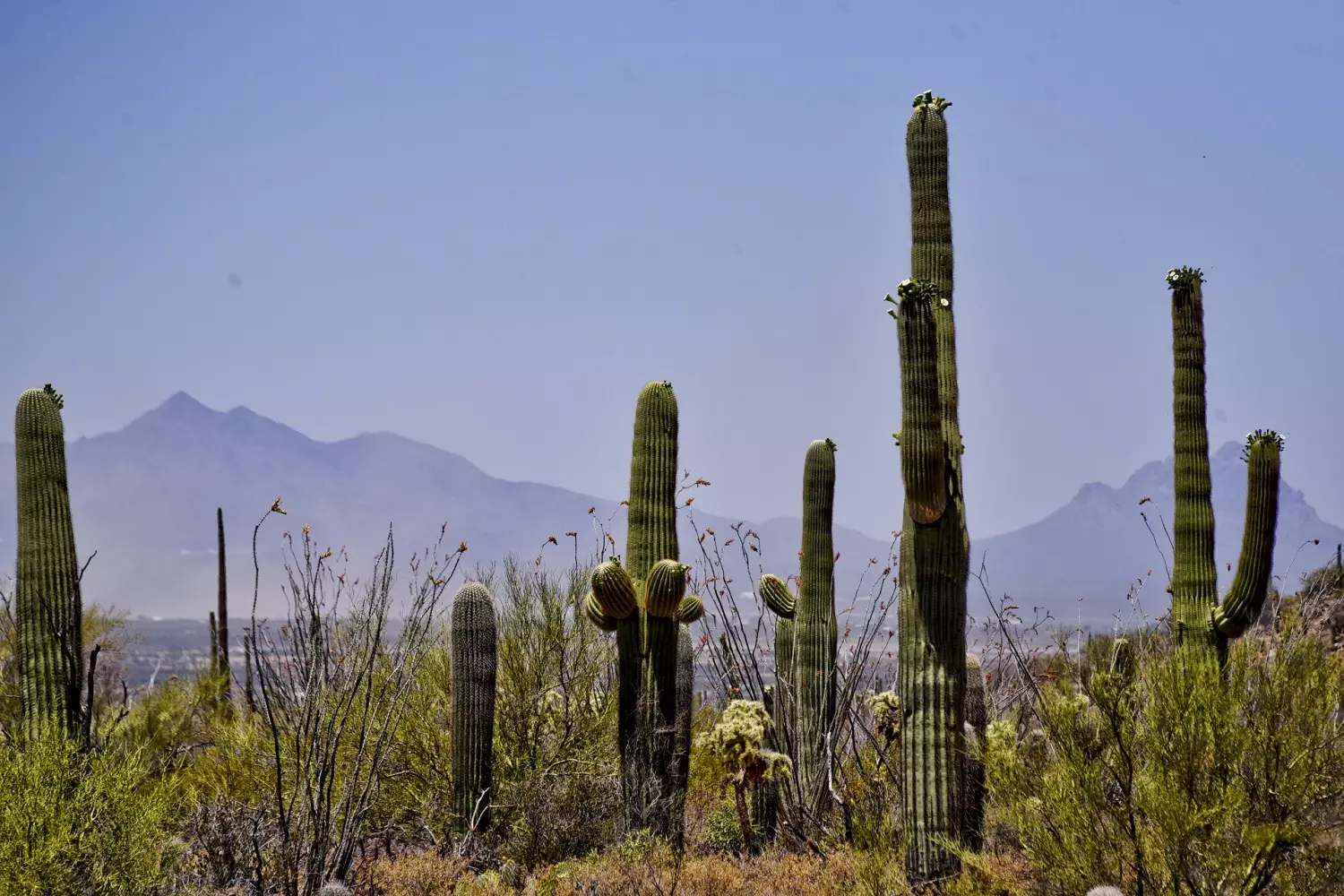We all know that cacti were created to survive in the heat and dryness of the desert. And we know that cacti store water in their stems to use when water is not available. But we also know that most plants take in energy from the sun through their leaves in the process called photosynthesis.
So, how does the cactus, not having leaves, tap into the sun’s energy?
No Leaves = Good
Although there are a few cacti with small leaves, most do not have any. While leaves are beneficial to the vast majority of plant species, leaves would be harmful to the cactus. Why?
Because leaves also lose moisture. And, when you live in an arid habitat, you can’t afford to lose moisture.
So, how has God created this plant to survive under these conditions?
The actual “leaves” on the cacti are the spines, which are highly modified to protect it from animals that would love to eat its juicy stems. Many cactus species also use their spines to tap into the moisture in the air. When the air is moist enough, due to fog or mist, the spines condense the moisture, making it fall onto the ground as drops around the base of the cactus thus capturing precious water.
How to Make Food?
With its leaves busy as protective spines, what is left for the cactus to use for photosynthesis? Their trunk, or stem. Let’s look at this more closely.
Most plants have little pores on their leaves called stomata. These pores open and close to collect carbon dioxide. During photosynthesis, plants use light energy from the sun to turn this carbon dioxide and water into food in the form of a sugar called glucose.
This process is risky in the desert because water escapes from the pores each time they open. With the cactus this whole process is done on the surface of the trunk.
While most plants open their stomata during the day, cacti and other nocturnal plants such as the agaves and aloes open their pores at night. The cactus will take in carbon dioxide at night and hold it until the next day’s sun energy can take that carbon dioxide and turn it into the glucose this plant needs. The lack of sun at night and cooler temperatures help the cactus retain moisture.
Cacti also have a waxy coating that helps retain moisture as well as a specialized root system.
You might think that the cactus would have very extensive roots to gather as much ground and surface water as possible. But this is not the case. Instead, most cacti have very shallow roots that extend several feet away from the plant, ready to absorb as much water as possible. When it does rain, the plant will quickly grow roots to tap into this abundant source of water. During dry periods these roots will die off to conserve what water the cactus has to prevent moisture from being lost through the roots.
While most cacti live in arid habitats, there are exceptions. One of these exceptions is the Selenicereus wittii¹. This cactus is just weird. It lives on the trunks of trees in the Amazon rainforest. Yes, you read correctly, weird right? The S. witii lives in central Amazonia and only grows in seasonally flooded rainforest. What’s stranger still is that this cactus lives on trees using its stems to grow completely appressed to the trunks. Roots emerge from near the spine-bearing areas of this plant and help to anchor it in place.
Now let’s look at a more commonly known saguaro cactus of the Sonoran Desert [shown at the top]. When many people think about cacti, this is the cactus that comes to mind.
These plants are large columnar tree-like cacti that develop branches (or arms) as they grow larger. These arms grow upward and usually number from 3 to 10. Saguaros can only be found in the Sonoran Desert, which is in southern Arizona and western Sonora, Mexico.
It is a very slow growing plant, attaining only an inch a year, be eventually reaching the height of 15 to 50 feet. We estimate the tallest are around 200 years old.
Like most cacti, the saguaro has a shallow root system, but its height is supported by a tap root about 3 to 4 feet long, as well as numerous anchor roots that wrap around rocks for support. The skin is smooth and protected by a waxy coating. When water is taken in, the outer ribs expand like an accordion and in the larger cactus it can increase its weight by up to a ton.
When God created plants, even though we would assume there were no deserts at the time, He knew there would be a need for plants being able to survive—and even thrive—in the desert.
Then God said, ”Let the land produce vegetation: seed–bearing plants and trees on the land that bear fruit with seed in it, according to their various kinds.” And it was so. Genesis 1:11
Footnote
For more on the Selenicereus wittii see:
- Henry Shaw Cactus Society: Selenicereus wittii
- And a great photograph of it wrapping around a greenhouse box: http://florawww.eeb.uconn.edu/images/byspecies/Selenicereus_wittii02.jpg








What an amazing God, full of grace even in the curse! The thorns of the cactus were a result of judgement for sin (Genesis 3:18). Yet these very thorns are what enable the cactus to survive in a harsh climate! That’s grace in judgment! The crown and cross were a judgement for sin, yet also an atonement that we might survive into life eternal!!!!! Wonderful God! Thank you for that article Mr. Velting! And thank you for the creation content on your site. William